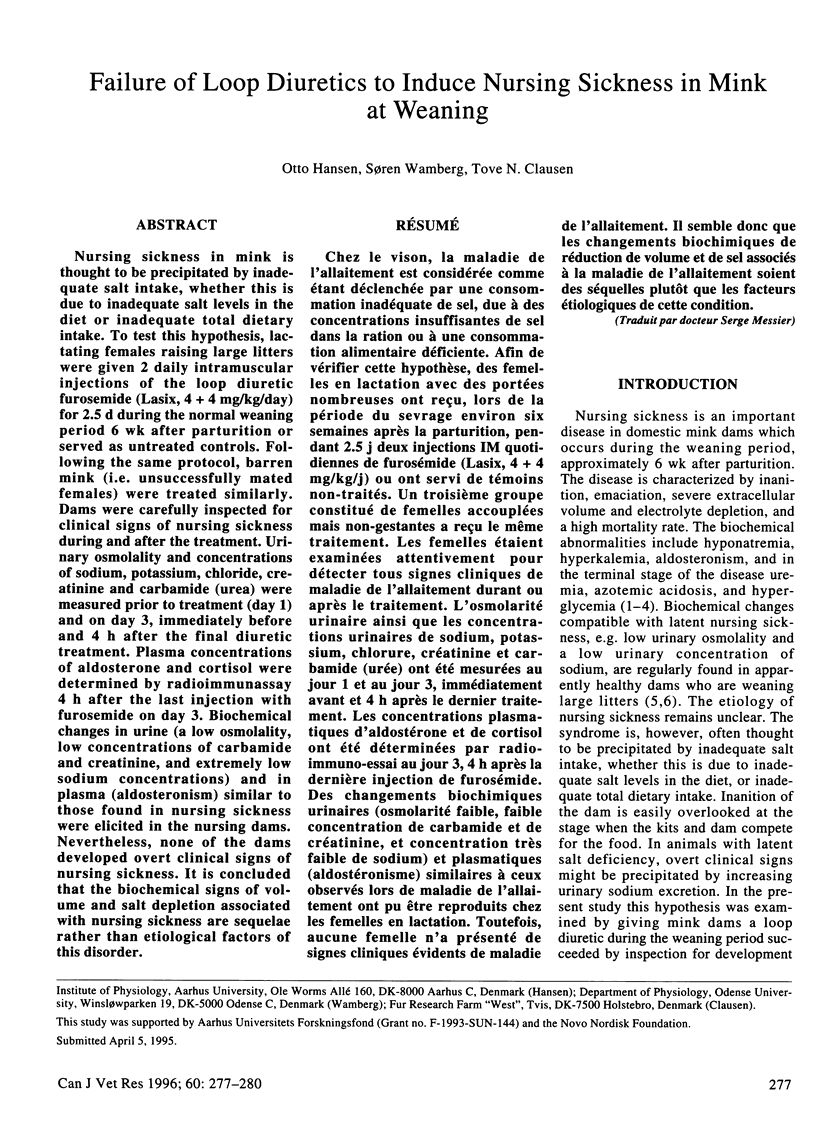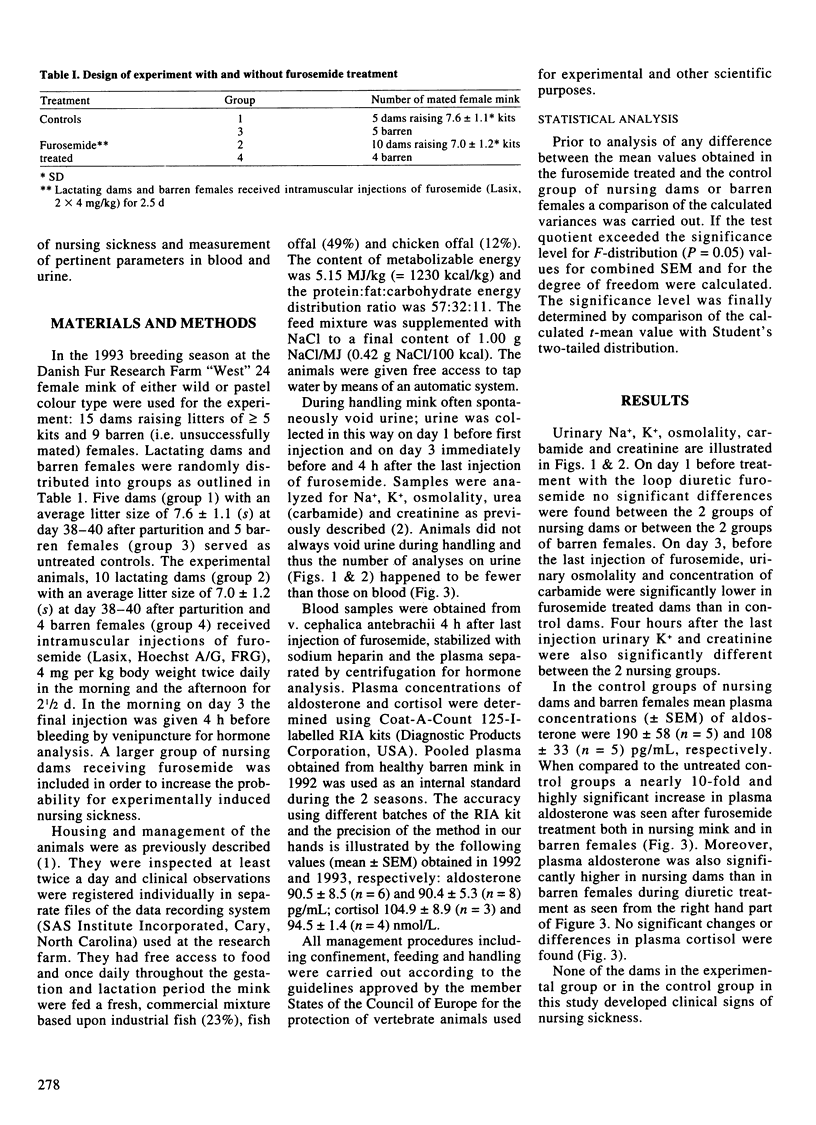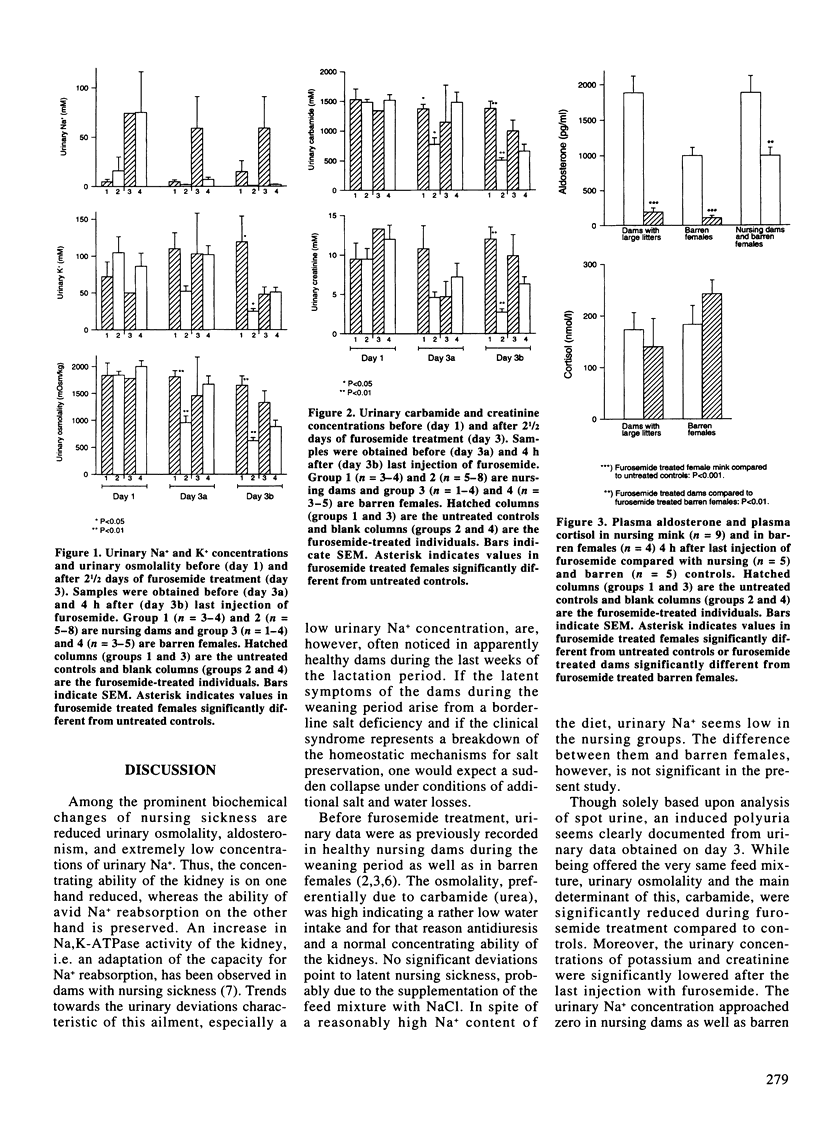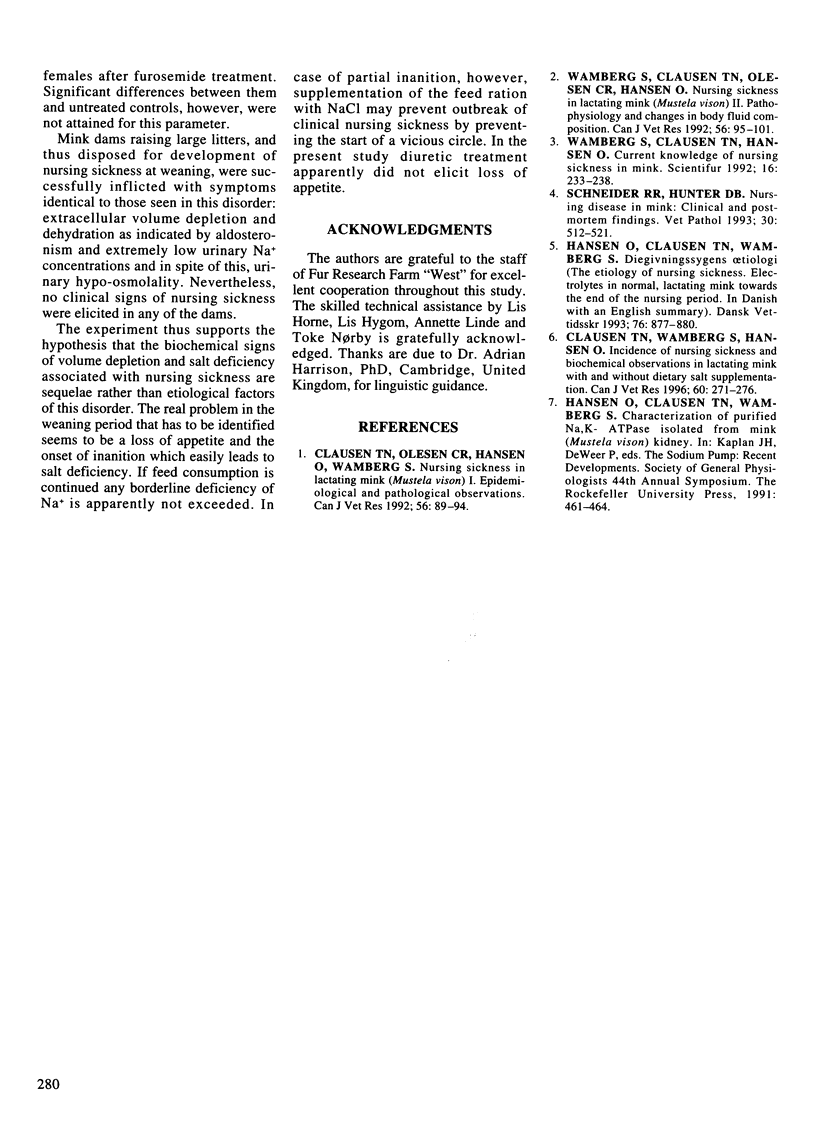Abstract
Nursing sickness in mink is thought to be precipitated by inadequate salt intake, whether this is due to inadequate salt levels in the diet or inadequate total dietary intake. To test this hypothesis, lactating females raising large litters were given 2 daily intramuscular injections of the loop diuretic furosemide (Lasix, 4 + 4 mg/kg/day) for 2.5 d during the normal weaning period 6 wk after parturition or served as untreated controls. Following the same protocol, barren mink (i.e. unsuccessfully mated females) were treated similarly. Dams were carefully inspected for clinical signs of nursing sickness during and after the treatment. Urinary osmolality and concentrations of sodium, potassium, chloride, creatinine and carbamide (urea) were measured prior to treatment (day 1) and on day 3, immediately before and 4 h after the final diuretic treatment. Plasma concentrations of aldosterone and cortisol were determined by radioimmunassay 4 h after the last injection with furosemide on day 3. Biochemical changes in urine (a low osmolality, low concentrations of carbamide and creatinine, and extremely low sodium concentrations) and in plasma (aldosteronism) similar to those found in nursing sickness were elicited in the nursing dams. Nevertheless, none of the dams developed overt clinical signs of nursing sickness. It is concluded that the biochemical signs of volume and salt depletion associated with nursing sickness are sequelae rather than etiological factors of this disorder.
Full text
PDF



Selected References
These references are in PubMed. This may not be the complete list of references from this article.
- Clausen T. N., Olesen C. R., Hansen O., Wamberg S. Nursing sickness in lactating mink (Mustela vison). I. Epidemiological and pathological observations. Can J Vet Res. 1992 Apr;56(2):89–94. [PMC free article] [PubMed] [Google Scholar]
- Clausen T. N., Wamberg S., Hansen O. Incidence of nursing sickness and biochemical observations in lactating mink with and without dietary salt supplementation. Can J Vet Res. 1996 Oct;60(4):271–276. [PMC free article] [PubMed] [Google Scholar]
- Schneider R. R., Hunter D. B. Nursing disease in mink: clinical and postmortem findings. Vet Pathol. 1993 Nov;30(6):512–521. doi: 10.1177/030098589303000604. [DOI] [PubMed] [Google Scholar]
- Wamberg S., Clausen T. N., Olesen C. R., Hansen O. Nursing sickness in lactating mink (Mustela vison). II. Pathophysiology and changes in body fluid composition. Can J Vet Res. 1992 Apr;56(2):95–101. [PMC free article] [PubMed] [Google Scholar]


